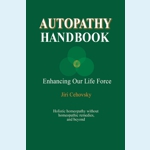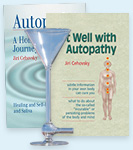A case history – how and why to write it
Case histories, or descriptions of concrete cases treated, are written and published in the conventional medicine and are part of the so called “evidence-based medicine”. Also homeopaths have been writing and publishing case histories in professional magazines or books for already two hundred years. There are several reasons for this. To show, how a particular approach, method, remedy, functioned in the practice, and to inform, how to proceed in similar cases in order to achieve the aimed for goal of the treatment. And of course, also to show that particular approaches, methods and remedies function and are valuable for the treatment.
In the methods of alternative medicine, which are not based on theory but on practical experiences, case histories are of prime importance. They point out to the healer the way in various problems, diseases and difficulties and they also tell the potential users of alternative medicine, which one from the large selection of currently offered methods they should choose.
When we speak about autopathy as a holistic method that can influence everything, this says nothing to many people who were weaned by the school system, the health system and the media. “Yes, holistic, this is nice. But I want to cure my long-term rheumatism, my allergy. I don’t need to cure other things.” Without wanting to criticize this widely spread opinion cultivated by our culture, it is important to pay it attention, to understand it and to meet it. For example by writing case histories. If you describe a case of your patient who suffered from knee pain for many years and whose problem passed after the application of autopathy that you recommended to him, many people who are suffering with long-term knee pain will contact you, for you to achieve the same effect also in their case. I do not suggest here that we should leave out the holistic aspect of the treatment, not taking into account the clients’ development as a whole, his other, “less important” ailments from psyche till skin, his feelings. On the contrary, it is our strong aspect, which we cannot and do not want to give up, because it is the only way to holistic health, the real aim of our healing. But through the fact of mentioning a concrete case with concrete diseases and pains, we draw the attention of those who have the same or similar diseases or diagnoses, after years of conventional treatment considered to be for chronic and incurable, possibly even without a chance for improvement. It is important to realize that autopathy provides everyone with a tool, by means of which problems considered to be incurable from conventional and materialistic point of view, can be cured. A tool which the official medicine does not have. And when I say everyone, I really mean everyone, also lay persons. A person, who arrived at autopathy so to speak against his/her will, through own health problems, or those of people close to him/her. And yet – through any improved or healed chronic problem (own or that of others), he/she becomes an expert. An expert in autopathy. And from this follows that he/she should inform others about what he/she has achieved, about that miracle. Through his/her testimonial and the description of own procedure, he/she enables others to cure themselves of similar problems and so contributes to wellbeing of others. Is “caring for the wellbeing of others” a cheap and often misused phrase? For me a totally useless and even detrimental activity? Perhaps this is the case in the industry or perhaps also somewhere else…but not in healing. When all people around us are ill (and they are, irrespectively what the newspapers write, or rather hold back from us), also we cannot be happy. Because we are a part of the whole. The Swiss psychologist and philosopher professor C.G. Jung had written once that those who heal others, heal also themselves. One could not say it better. When I contribute to the healing of others, I build with it my own heaven (not only) on Earth, although built from ruins.
Short, concise and possibly accurate description of how I cured my or someone else’s long-term back pains, headaches or insomnia (in some cases all three), can help hundreds of people who are suffering from the same problem, who will also learn that this problem can be healed and how it can be healed. It can help to improve their life quality enormously. And thus also my own. Because this way I have relocated myself from the world of destruction, conflicts and bad will into the world of construction, compassion and helping and at the same time improved the environment in which I live.
The points contained in a case history:
- Concise and factual description of the initial condition, main points of the clients’ initial statement, what he/she said about his/her feelings, problems and difficulties, what bothered him/her and what he/she wanted to be cured. Eventually, if available from the past, mention also medical diagnosis or test results. Writing or stylistic abilities are certainly of no importance. Only the bare facts.
- Which potency for autopathic dilution was selected.
- Which form of preparation for the dilution was selected.
- How often was autopathy applied.
- How the individual problems noted in the initial interview changed at the various control check-ups. If and how the system of application had changed (dilution, form of preparation, periods of application).
- Publish case histories in the Internet, for example by sending them to the well visited pages www.autopathy.com with includes section “Cases”, or present it at a conference.
An argument that a publication of a case is not in place because the case was not closed yet and unresolved problems still persist, is not valid here. As a matter of fact, cases of holistic healing never end. It suffices to describe, which chronic problems were resolved up to date and, of course, also to mention those which are still worked on. These can be subject of some future case history. Especially valuable are cases of self-healing, describing the personal experiences of healing. When a person describes own case or that of a person near to him/her, but does not want to say this directly because he/she will be putting his/her signature under the case history, it is possible to write as if the case would concern another person, a client.



